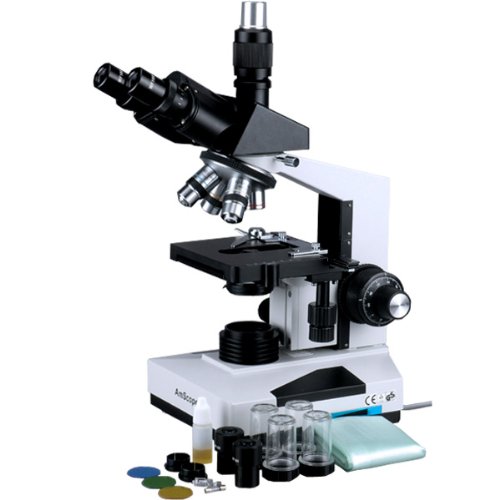Celiac disease, also known as gluten sensitive enteropathy is very base but oftentimes missed. It is an autoimmune disease of intestinal damage due to gluten in population who are genetically predisposed. Superior Celiac disease is diagnosed by abnormal blood tests and an abnormal
appearing intestine on biopsy and symptoms that conclude with a gluten free diet.
Several blood tests exist for Celiac disease. They have varying degrees of accuracy. Some are more sensitive, meaning they will be definite in milder forms of the disease but are not specific, meaning a definite test may not indicate Celiac disease. Others are felt to be very specific, meaning that when they are positive, it is approximately definite you have the disease.
Microscope
The most exact tests are tests for Celiac disease endomysial antibodies (Ema) and
tissue transglutaminase antibody (tTg) tests. These two tests are IgA based tests and can be negative if you are deficient in the immunoglobin IgA, which occurs in 10-20% of population with Celiac. When whether Ema or tTg are definite Celiac disease is very likely and usually the intestine biopsy is positive. Up-to-date studies indicate that the tTg may only be definite in 40% of true Celiacs when mild degrees of intestine damage are present on biopsy. Seronegative Celiac, meaning the blood tests are negative but the biopsy is positive, may occur in up to 20% of Celiacs.
Antibodies for gliadin (Aga), the toxic fraction of gluten are carefully very sensitive but not exact for Celiac disease. Newer assays for Aga antibodies for gluten that has undergone a chemical change
called deamidation appear to be more exact for Celiac disease (Gliadin Ii,
Inova) than the older gliadin tests. They also may be as or more accurate than Ema and tTg
antibody tests but are not yet widely available.
The most distressing question for population with lesser forms of gluten intolerance who have blood tests and/or biopsies that are general or borderline yet sass to a gluten free diet is whether not being taken seriously or knowing for sure if they are sensitive to gluten. For these individuals stool
antibody testing for antigliadin and tTg have been helpful. Such stool testing has been performed in explore labs and published in a few studies but are only recently ready straight through the industrial lab, Enterolab. Founded by a old Baylor explore gastroenterologist, Dr Ken Fine, the tests are ready to population online without a doctors order but are not commonly covered by insurance. Dr. Fine, who patented the test, has yet to publish the results of his findings in a peer reviewed journal so his tests are not widely accepted. However, his unpublished data and the clinical caress of some of us who have used his test have
indicated the tests are very sensitive for signs of gluten sensitivity. He reports that they are 100% sensitive for Celiac disease and highly sensitive
for gluten sensitivity of lesser degrees. In the proximity of symptoms, that reverse on a gluten-free diet,
abnormal stool antibody levels can be found in most population before blood tests or biopsies come to be
abnormal.
Small intestine biopsies during upper gastrointestinal endoscopy
are carefully the "gold standard" for the prognosis of Celiac disease.
However, Up-to-date studies have demonstrated that some population with gluten sensitivity, especially relatives of Celiacs
with exiguous or no symptoms, have changes from gluten injury to the intestine that can not be seen with general microscope examination. They can only be seen with extra stains not routinely done or with a explore electron microscope. The extra stains are known as immunohistochemistry stains. They stain specialized white
blood cells called lymphocytes in the intestinal lining tips or villi. When these lymphocytes are increased it is known as intraepithelial lymphocytosis or increased Iels and it is the earliest sign
of gluten induced injury or irritation. Electron microscopy also reveals very early ultrastructural changes in some individuals when blood tests and suitable biopsy examination are normal. When population who have these changes are
offered the option of a gluten-free diet they usually responded favorably. In contrast, those who continue to eat gluten often later developed Superior Celiac disease.
What these studies propose is that a "normal small intestine biopsy" may exclude
Celiac disease as defined by accurate criteria but it is not a gold suitable for detecting gluten sensitivity. This fact is appreciated by many individuals who have sass to a gluten-free diet they start
based on their symptoms, house history, suggestive blood test or stool antibody
test(s).
Another source of obscuring is in the genetics of Celiac and gluten sensitivity.
Testing for exact blood type patterns on white blood cells known as Hla
Dq2 and Dq8 is increasingly being employed to conclude if a someone carries whether of the two gene
pattern present in 95-98% of Celiacs and predisposing them to the development of Celiac disease. Some use the absence of these two patterns
as a way of excluding the possibility of Celiac disease and the need for testing or
gluten-free diet. However, there are rare reports of documented Celiac disease in population who are Dq2 and
Dq8 negative. Moreover, Up-to-date studies indicate other Dq
patterns may be associated with gluten sensitivity though unlikely to
predispose to Superior Celiac disease.
Testing for all the Dq patterns is advocated by Dr. Fine, based on his
experience with stool antibody test results. He reports that other Dq types are
associated with elevated levels of gliadin and tTg in the stool and symptoms that sass to a gluten-free diet.
According to his unpublished data, all the Dq types except Dq4 are associated with
a risk of intolerance to gluten. Therefore, testing for all the Dq types allows a someone to
determine if they carry one of the two high risk gene types for Celiac disease or
any of the other "minor Dq" genes Fine has found associated with gluten sensitivity.
Enterolab's stool testing for gliadin antibodies and tissue
transglutaminase antibodies, though not widely accepted, have gained favor in the lay
public's notion as an option for determining sensitivity to gluten whether despite negative blood tests and/or biopsies or in place of the more invasive tests. Most doctors still propose the suitable blood tests and small
bowel biopsy for confirmation of Celiac. Though the reports in the lay society
are overwhelmingly definite they have not been subjected to peer retell in
the healing society pending Dr. Fine publishing his data or other researchers reproducing his results.
However, doctors open to
the broader question of gluten
sensitivity are reporting these tests helpful in many patients suspected of gluten
intolerance. Especially when someone has symptoms consistent with gluten sensitivity but has negative or inconclusive blood tests and/or biopsies these tests may be very helpful though some are not definite
how to construe the tests. The national Celiac organizations are uncertain about how to
comment on their application without published explore though a Up-to-date article
in the British healing Journal did show stool tests highly exact for Celiac. Dr.
Fine has publicly commented that his unpublished data demonstrates those with
abnormal stool tests indicating gluten sensitivity
overwhelmingly sass favorably to a gluten free diet with revision of
symptoms and general quality of life.
Another question is that there are not universally agreed upon definitions for gluten sensitivity or intolerance. This becomes especially difficult for those who do not meet accurate criteria for Celiac disease yet may have abnormal tests and/or symptoms that sass to a gluten-free diet. Those individuals come to be confused when they try to find data but do not have a formal prognosis of Celiac disease. Consensus in the healing society on definitions and more explore in this area is greatly needed.
The few doctors who appreciate the spectrum of gluten
intolerance or sensitivity are outnumbered by the healing majority that continue to
insist on accurate criteria for prognosis for Celiac disease before recommending a
gluten-free diet. Doctors whether unfamiliar with the limitations of the tests as documented by Celiac explore or who insist on the
strict criteria for Celiac being the only indication for recommending a gluten free
diet unfortunately may confuse or frustrate gluten sensitive individuals. Some of these population then seek answers on the internet or from alternative practitioners. Many have their prognosis missed, challenged, dismissed, or are misinformed. As a consequent they fail to benefit from the health
benefits of a gluten-free diet because they are advised that it is not required based on general blood tests and/or general biopsies. In the meantime, Celiac disease and gluten sensitivity continue to be undiagnosed or misdiagnosed. For more data visit http://www.thefooddoc.com.
Diagnosing Celiac Disease and Gluten Sensitivity
See Also : Finishing Products Pneumatic Plumbing Server Rack Cabinet Shelf



























